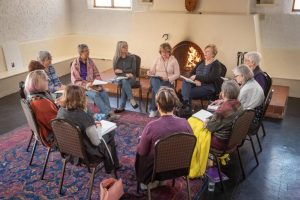
Functional Writing Activities for Individuals with Aphasia
Functional Writing Activities for Individuals with Aphasia
Persons living with Aphasia have a difficult time communicating their daily needs. The role of an SLP is to expand the scope of functional communication between individuals with and without Aphasia. It can have a severe impact on a person’s ability to comprehend or express. SLPs have made use of different modalities through which persons with Aphasia can communicate. One such interesting medium is writing!
On a daily basis, we communicate with each other via text, email and messages! SLPs have created therapeutic techniques that make writing one of the most efficient mediums through which people communicate. The approach is less effortful, takes lesser time and improves the person’s cognitive and visual abilities. In recent times, with the use of technology, writing has become faster and more convenient. Individuals with acquired dysgraphia can use these activities to improve their writing skills so as to expand their communication abilities.
The term Dysgraphia means writing disability. It is a common symptom of Aphasia. However, this impairment does not gain much attention as that of a speech handicap, resulting in a reduced number of intervention strategies for the same. Many people who suffer from dysgraphia face issues with social participation, internet usage, and privacy. The severity can range from those who cannot spell to those who cannot write even a word. Further patterns of breakdown can arise from an inability to store spellings long enough for them to be written or, in the case of handwriting, to access and execute letter shapes.
1. Typing text messages
Currently, the reliance on technology to communicate over long distances has increased. Individuals with aphasia can learn to write single-word messages electronically to communicate their immediate needs. However, typing requires some skills. In this case, the integration of the central language processing system and peripheral skills are required. In simpler terms, the person must be able to use the language stored in their brain to write simple words. For this reason, practice can help persons with aphasia improve their motor coordination and strength.
2. Letters
Firstly, letter writing is a great way to practice functional writing. For example, the use of formal and informal letters to communicate professionally and casually are very important to get your message across. This can be very difficult for aphasics who have just come out of surgery. But with a sufficient amount of training people have been able to write long letters specifying their needs.
3. Notices
Notices are short 2-3 word messages that can help individuals indicate warnings or important advice. For example, messages such as “Do not disturb”, or “Keep the Light on” can be very easy to write or type out. These letters can be typed out, printed, and placed in locations that are relevant as and when required.
4. Codes
For individuals with severe motor disabilities or paralysis, the use of codes that can be activated with a tap of a finger or a blink of an eye can be very useful. For example, pushing buttons in a certain pattern to indicate a particular code. Translation of these codes into actually written messages is possible. Furthermore, with the help of a screen, people can view these messages.
5. Group Activities
This activity requires a large room with a large table and a lot of paper and pencils. Additionally, a blackboard would be great too! Moreover, they will assign tasks to members of the group and create short-term and long-term writing goals for each participant and work with them on a one-to-one basis. However, the writing exercise varies from person to person on the basis of severity level. Furthermore, using the Life Participation Approach to Aphasia (LPAA), speech-language pathologists can help people with acquired dysgraphia expand their communication abilities
6. Evidence-Based Writing therapy
Even though there are only a few evidence-based functional writing interventions, few have been proven to be highly effective for acquired dysgraphia. However, the following list captures all of the evidence-based, therapeutic writing techniques frequently used.
- Phoneme-Grapheme Re-Training (Hillis and Trupe 1986)
- Written Naming Tasks (Hillis, 1991)
- Item-Specific Lexical Spelling Treatment (Clausen and Beeson, 2003)
- Anagram and Copy Treatment (ACT) (Beeson, Hirsch, and Rewega, 2002)
- Copy and Recall Treatment (CART) (Beeson and Rapcsak, 2002)
- Problem-Solving Approach to Spelling Training (Beeson, Rewega, Vail, and Rapcsak, 2000)
- AAC for Adults with Communication Difficulties - October 12, 2024
- Amazon purchases for your child’s speech development - January 31, 2023
- Functional Writing Activities for Individuals with Aphasia - January 23, 2023



Leave a Comment
(0 Comments)